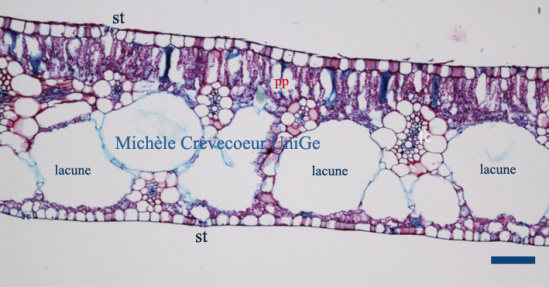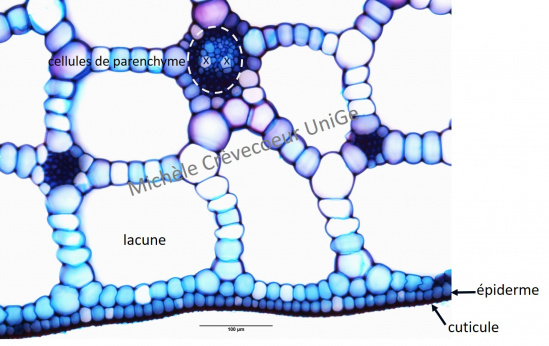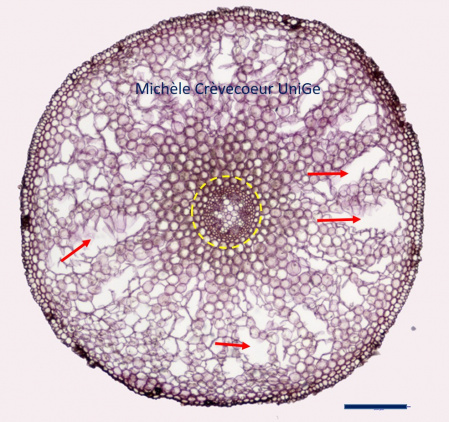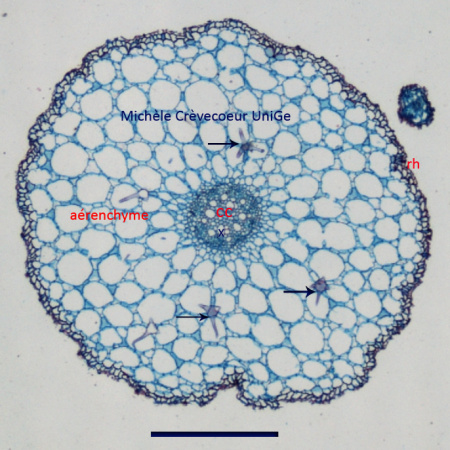Aerenchyma
This parenchyma is found in organs (leaves, petioles, stems, roots) of plants living in water or in moist environment. Aerenchyma develops extensive intercellular empty spaces (lacunae) that allow the movement of gazes. In a plant it is continuous from the stem to the root. The three examples on this page are also found in the menu « anatomy ». They illustrate aerenchyma in a leaf, a stem and in roots.
First example: paraffin cross section through a leaf of Eichornia crassipes – Water hyacinth. (See also leaf anatomy). The sample was taken at the Botanical Garden of Geneva.

*
Eichornia crassipes is a perennial aquatic plant that forms a rosette of leaves at the water surface. Stomata (st) are present on both faces of the leaf and cuticle of both epidermis is very thin. The mesophyll corresponding to the face in contact with water (ad axial face) is characterized by large lacunae forming aerenchyma bordered by rows of small cells. Palisade parenchyma (pp) is located in the upper part of mesophyll (ab axial face in contact with air). Scale: 100 μm
Second example: paraffin cross section through a stem of Potamogeton (see also stem anatomy), an aquatic plant.

Part of the cross section with the aerenchyma. It consisits of large lacunae that are lined with rows of small regular cells. X: xylem. Scale: 100 μm.
Third example: aerenchyma in Caltha palustris (left) et Nymphea (right) roots. See also root anatomy

Red arrows: large lacunae in the cortex in a cross section.

Blue arrows: sclereids (see supporting tissue) observed in some places in the aerenchyma that occupy the totality of the cortex.